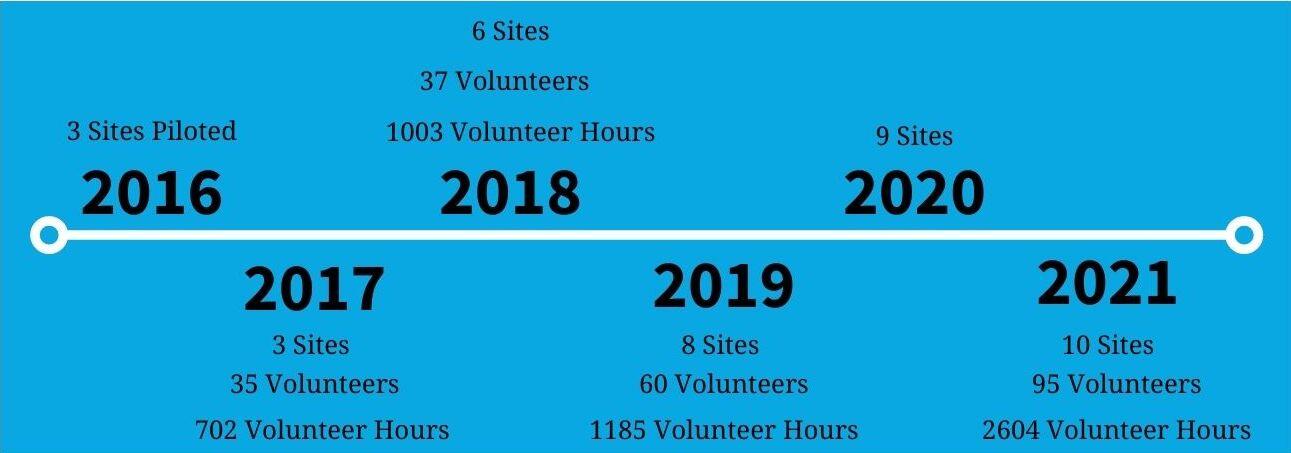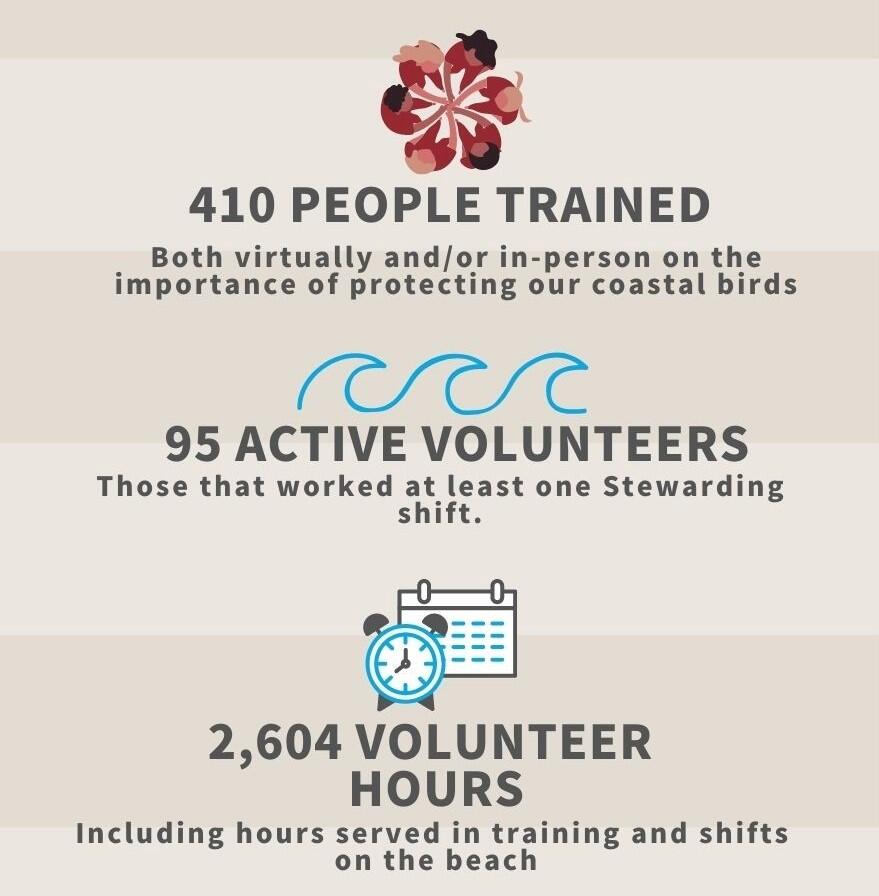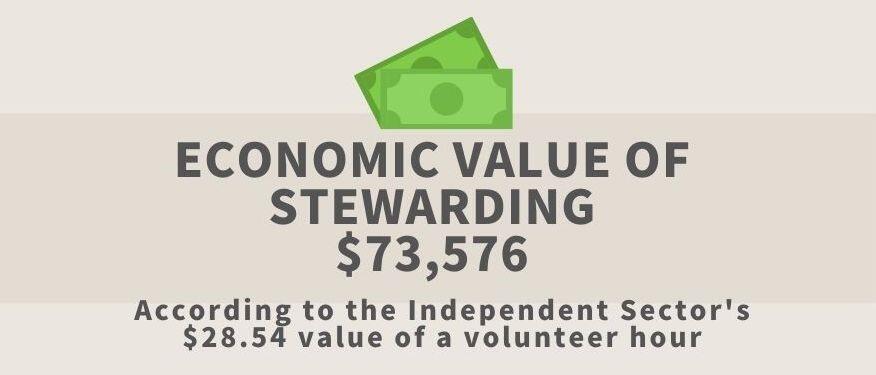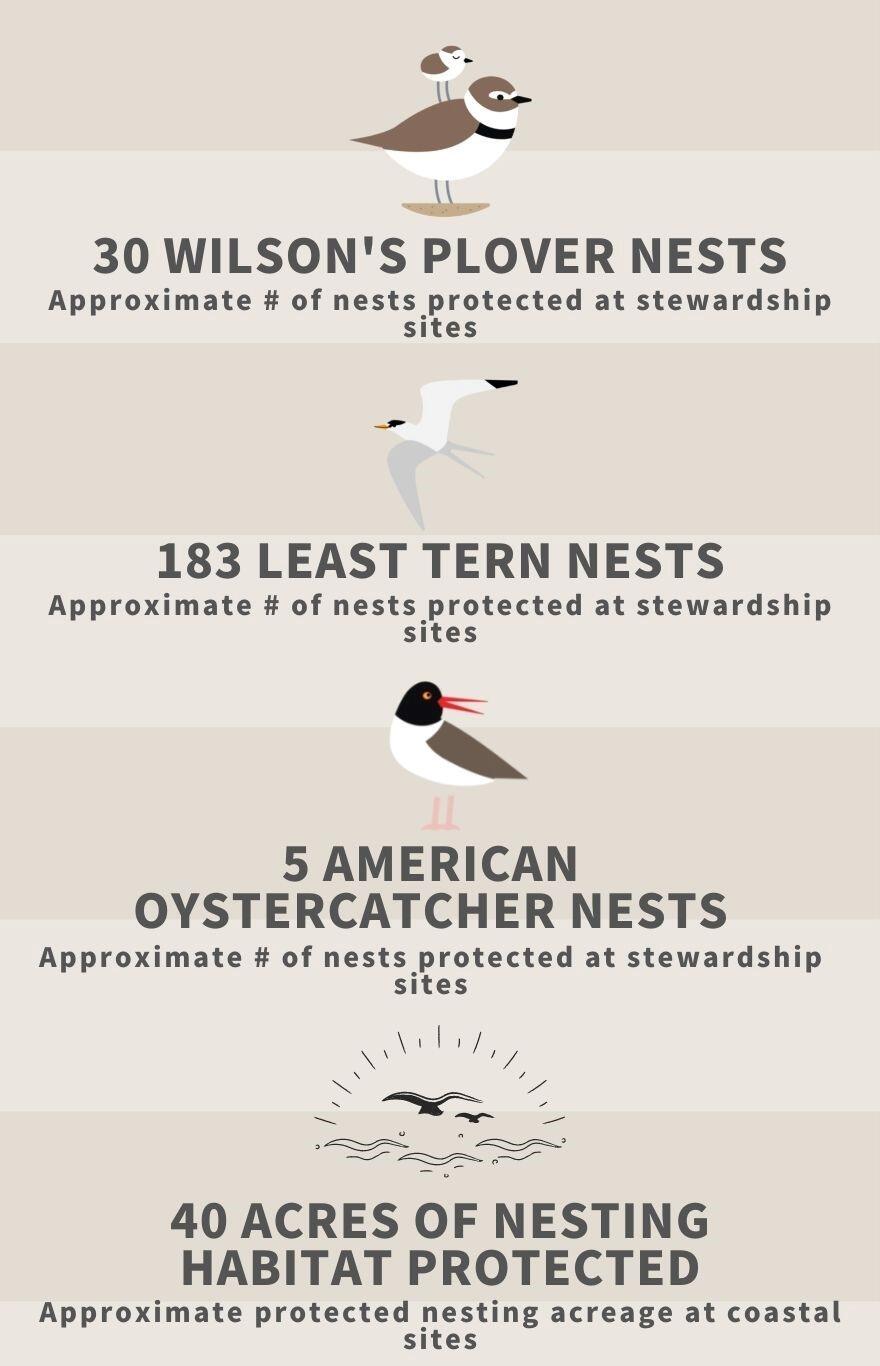There is no doubt that Audubon Shorebird Stewards are the boots on the ground that we need to help protect our vulnerable coastal birds. For those who may be unfamiliar, volunteers spend their time on the beach near nesting and migratory stopover areas, educating their fellow beachgoers about why it's important to keep their distance from nesting and resting coastal birds. Following a busy summer season of talking to beachgoers in the heat, it can be easy for us to lose sight of the bigger picture as conservationists. Reflecting back on not only this year’s stewardship work, but the growth of the Shorebird Steward program as a whole can help all of us remember the bigger picture: the growth of this program means more protection for the coastal birds that rely on South Carolina's coastline.
As we mentioned in the Mid-Season Update, active stewardship programs support more successful nesting and more restful migrations. For this reason, ASC began piloting coastal stewardship sites at Dewees Island, Lighthouse Inlet Heritage Preserve, and Harbor Island in 2016. In the graphic below you can see that sites have been added over the years following the launch of ASC’s Shorebird Steward program in 2017. In 2018, Huntington Beach State Park, Botany Bay Plantation and Kiawah Island hosted stewards, doubling volunteer hours served. Two more sites, Hunting Island and Isle of Palms Wild Dunes, were added in 2019, and Seabrook Island was able to launch its program in early 2020 despite the pandemic halting ASC volunteers from officially stewarding. Both Kiawah and Seabrook Islands are now autonomous programs, run by their respective Town members, with full support from Audubon SC mainly in the form of volunteer training sessions. Total volunteer hours and the number of people trained have also grown immensely this year. The Table below shows those statistics from 2017-2021.

| Year | Sites | Indiv. Trained | Vol. Hours of Training | Stewards | Hours Stewarded | Vol. Hours Total | % Growth Rate of Total Vol. Hours |
| 2017 | 3 | 135 | 336.5 | 35 | 366 | 702.5 | NA |
| 2018 | 6 | 113 | 336 | 37 | 667 | 1003 | 42.78% |
| 2019 | 8 | 170 | 510 | 60 | 675 | 1185 | 18.15% |
| 2020 | 9 | NA | NA | NA | NA | NA | NA |
| 2021 | 10 | 409 | 818 | 95 | 1760 | 2578 | 117.56%* |
*Between 2019 and 2021
Positive growth rates in total volunteer hours from year to year reflect the hard-work of ASC’s Coastal Program Associate, Nolan Schillerstrom. He has spearheaded ASC’s coastal stewardship work from the start and continues to train and educate hundreds of people each year. Those efforts allowed for the addition of a Seasonal Coastal Stewardship Coordinator, Allyssa Zebrowski, who has been able to bolster the coastal stewardship program during the 2021 season. But above all else, the success of ASC's stewardship program, and all the birds protected by it, is thanks to the hundreds of volunteers that have been involved over the years. The big accomplishments from 2021 are outlined here but anyone can download the full report AT THIS LINK. This report features detailed information about each stewardship site that Audubon SC works with, as well as statistics about our volunteers and the positive impact they've had on coastal birds this year. Below is a snapshot of that data.
Shorebird Stewardship begins each year with training sessions offered across the coast, and virtually, for those interested in our coastal birds, the conservation challenges they face, and how to better protect them. This year, 410 people were trained, with 95 of them actively volunteering this summer. Through beach shifts and attending training sessions, volunteers accumulated a total of 2,578 hours spent in the program.

An online training video, a new feature this summer, seemed to help many more people complete their stewardship training. What’s even more impressive is the economic value of that volunteer work, calculated to be approximately $73,576 this year—based on a standard $28.54/hour value of a volunteer hour as determined by the Independent Sector (2021). What’s priceless, however, is the protection that those volunteers gave to numerous birds that nested and rested on our beaches this summer.

The three main nesting species that Stewards helped protect this season include the American Oystercatcher, Wilson’s Plover, and Least Tern. Based on monitoring efforts by Audubon staff, and counts done by volunteers, SC Department of Natural Resources, and the US Fish & Wildlife Service, there were 218 nests protected at stewardship sites. Of those 218 nests, 5 were American Oystercatchers, 30 were Wilson’s Plovers and 183 were Least Tern. Symbolic fencing was posted around 40 acres of nesting habitat this summer across all 10 stewardship sites and these were the areas that stewards most often stood near to educate beachgoers.

Based on volunteer reports, there were 74 other coastal bird species spotted during shifts, including the Federally Threatened/Endangered Piping Plover and Red Knot. Reported disturbances to the birds based on volunteer reports and monitoring efforts included 4 humans walking through a posted area, 155 leashed dogs, 54 unleashed dogs, airplane/helicopter flyovers, a few people flying kites and a few others walking/recreating too closely to posted areas. Non-human related, natural disturbances included crows, Ospreys, gulls, coyotes, ghost crabs and storm/tidal surge in nesting areas. According to post-shift reports filled out by volunteers, 99% of beachgoer interactions were positive. Based on volunteer reports and observations from staff and volunteer site leaders, stewards positively interacted with over a ten-thousand beachgoers through the course of the summer.
According to the data, Stewards helped to deter many humans from disturbing hundreds of coastal nesting and migratory birds and further educated them on the importance of giving birds their space. A 70% decline in coastal bird populations since the 1950’s is indicative of the birds’ ongoing battle with human disturbance. Shorebird Stewards, as clearly seen in the numbers, play a major role in the conservation of these vulnerable species. Through collaboration with important partners and the South Carolina community as a whole, we will continue to educate beachgoers, track their impact on nesting and migratory birds, and grow and adapt the ASC Coastal Stewardship program. If you volunteered as a Shorebird Steward anywhere in South Carolina this year, we at Audubon hope that this article helps you (and future Stewards!) recognize that your incredible efforts are working, and are part of a huge network of conservationists working to protect our feathery friends worldwide. Thank you to everyone for sharing the beach with coastal birds! For more information on how to become a Shorebird Steward, visit this page.








